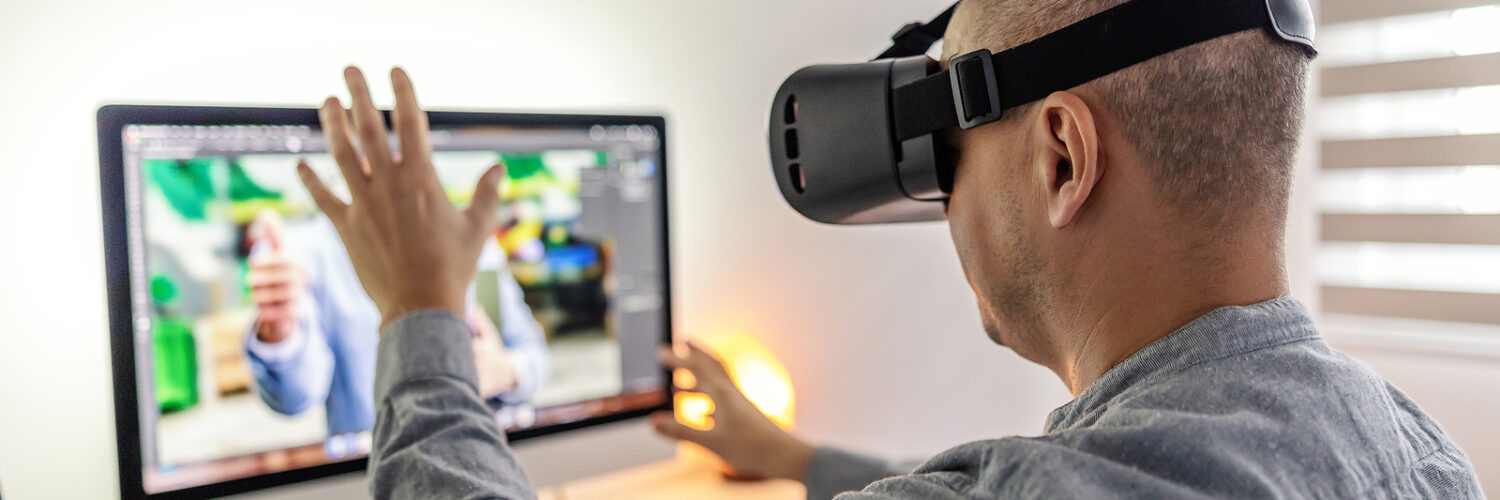Have you ever wondered how Extended Reality (XR) is reshaping higher education? Through a series of case studies, discover how innovative institutions are leveraging Extended Reality to revolutionize the learning experience. From virtual laboratories and interactive simulations to enhanced field trips and collaborative projects, learn how XR is reshaping education. Presenters from different institutions will not only showcase their successful implementations but also share their tips & tricks for integrating XR in higher education.
Moderator: Monika Theron , Leiden University, The Netherlands
Presentations
Creating high end impact with low end VR
Vivian van Laarhoven & Lieve Van Cutsem, UCLL, Belgium. It’s not always necessary to use complex VR setups and applications to create a meaningful impact in education. In this presentation, Vivian van Laarhoven (expert in audiovisual learning technologies) and Lieve Van Cutsem (lecturer in social readaptation sciences) shared their experience of developing an educational package in collaboration with students. The centerpiece is a 360° VR video that allows viewers to step into the daily life of someone with both intellectual and physical disabilities.Presentation can be found here.
Unlocking Empathy: Bridging the spectrum in higher education with VR
Ahmed Yousof, East Stroudsburg University of Pennsylvania, USA. Ahmed’s presentation was about a 360 interactive movie that provides a first-person perspective of a college student diagnosed with Autism.- 360 video “If I were you” script can be found here.
- VR Scenario-based Template can be found here
- VR Experience Evaluation
Presentation can be found here.
Facilitating real time cross-institutional interaction in pleading for law students
Linde Voorend, Vrije Universiteit Amsterdam, The Netherlands. This short presentation covered some case studies with XR executed at the Vrije Universiteit Amsterdam and what we learned from them. What are opportunities and what might be obstacles in using XR successfully in higher education?Key takeaways:
- PleitVRij is an application developed specifically for law students to improve their pleading confidence and skills.
- PleitVRij is an example of cross-institutional working, in which students from different universities can meet each other in virtual space. The added value of this is that students are presented with an unfamiliar judge to which they have to plead, stimulating real practice instead of learning by heart beforehand and simply reciting in the class room.
- PleitVRij, as VR experience, is integrated in the whole course and does not stand on itself (e.g. the coördination between the different institutions, the feedback rubrics, the space and technology management that is needed). As a stakeholder in the process of designing and/or using XR, think about what is needed to successfully integrate XR experiences in education.
- With the last point in mind; construct a team of experts to design education with XR (e.g. someone with technical knowledge, someone with didactical knowledge, organizational support).
- Make sure that XR is the best method to achieve your learning goal, instead of designing your education around a XR experience. Use XR as a means to support your learning outcomes.
Presentation can be found here.
Links shared in the chat:
- Education Espresso podcast
- Linde’s article “From courtroom to museum: The use of XR at VU Amsterdam”
- Video about PleitVrij

Funded by the European Union. Views and opinions expressed are however those of the author(s) only and do not necessarily reflect those of the European Union or European Education and Culture Executive Agency (EACEA). Neither the European Union nor the granting authority can be held responsible for them.


